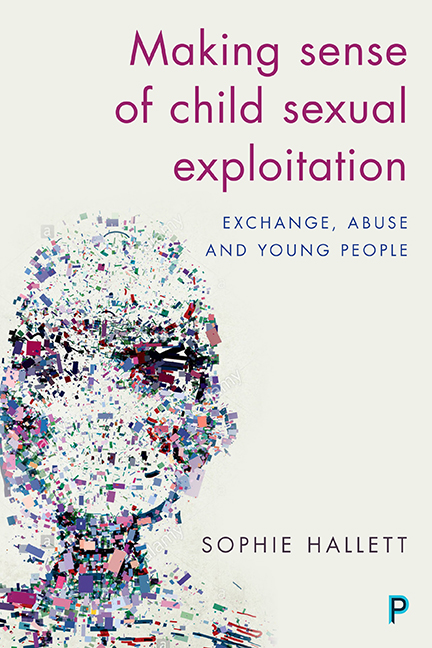Book contents
- Frontmatter
- Dedicaton
- Epigraph
- Contents
- Acknowledgements
- Introduction
- one From ‘child prostitution’ to ‘child sexual exploitation’: an overview
- two Vulnerabilities
- three Risk
- four Exchange and abuse
- five Responses, recognition and reciprocity
- Conclusion: child sexual exploitation – agency, abuse and exchange
- References
- Index
Conclusion: child sexual exploitation – agency, abuse and exchange
Published online by Cambridge University Press: 05 April 2022
- Frontmatter
- Dedicaton
- Epigraph
- Contents
- Acknowledgements
- Introduction
- one From ‘child prostitution’ to ‘child sexual exploitation’: an overview
- two Vulnerabilities
- three Risk
- four Exchange and abuse
- five Responses, recognition and reciprocity
- Conclusion: child sexual exploitation – agency, abuse and exchange
- References
- Index
Summary
In the introduction, this book was defined as an exploration of the problem of child sexual exploitation from the viewpoints of young people with experiences of it, and of those charged with their support and protection. It was indicated then, and will be clear by now, that this issue extends outwards into a series of other related problems, most obviously the multiple and concatenating difficulties experienced by young people that make them vulnerable, and which run alongside their experience of sexual exploitation. Then there are the challenges experienced by professionals in their attempts to respond to young people identified in this way – dilemmas of practice, some (not all) openly acknowledged. Then there are the problems arising from the way in which ‘child sexual exploitation’ as a social problem is constructed and articulated in policy and practice frameworks. Given which, and in bringing the discussion to a close, there will now be a consolidating discussion of the data, analysis and key arguments that have featured throughout.
Fundamentally, there are problems arising from the way in which child sexual exploitation is conceptualised within current policy frameworks. Child sexual exploitation is not only a problem per se but is also, in itself, problematic in terms of definition. This is particularly so in respect of the way in which the problem is framed and defined as the grooming of children by predatory adults. It has been argued that this conceptualisation is narrow and obfuscating, inhibiting a fuller understanding of young people's experiences, which, in turn, limits what it is that professionals can see and are able to do when faced with a young person in need. This adds support to the argument that there is an urgent need for policy and practice frameworks to explicitly recognise those involved in the exchange of sex outside of grooming in order to acknowledge and promote much-needed support for young people in these sorts of difficulties (see Pearce et al, 2002; Phoenix, 2002; Moore, 2006; Pearce, 2010; Melrose, 2012). Responses to the problem need to acknowledge and address the reasons that underpin why it is that some young people may be ‘groomed’, or feel that the exchange of sex is expected or inevitable, and is the best or ‘least worst’ option.
- Type
- Chapter
- Information
- Making Sense of Child Sexual ExploitationExchange, Abuse and Young People, pp. 143 - 154Publisher: Bristol University PressPrint publication year: 2017



